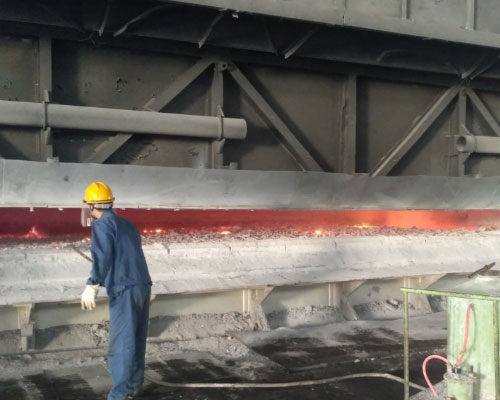AdTech provides methods for refining the melt of pure aluminum or aluminum alloy, and flux for refining the melt of aluminum alloy.
It is well known that aluminum alloy products such as plates and plates, profiles, wires or bars are produced by plastic working such as rolling (hot or cold rolling), extrusion or forging of cast aluminum alloy ingots.
In the melting or casting step of aluminum alloy ingots, Al raw materials (Al base metals, scraps of Al alloy products, etc.) are usually melted in a melting furnace, and then the composition of the melt is adjusted to refine the molten aluminum alloy. The refining of the molten aluminum alloy (hereinafter referred to as molten Al) is a method for cleaning the molten liquid and includes the following steps: a step of injecting chlorine gas or a chlorine-based flux together with an inert gas. The gas enters the melt as a carrier gas; the gas components are removed from the melt or inclusions are formed in the melt to form slag; the slag is removed from the surface of the molten aluminum.
The refined molten Al from the melting furnace is supplied to the mold through the respective launder regardless of whether it passes through the holding furnace. When the refined Al melt flows down the launder, the inclusions will be further removed through the ceramic foam filter or filter box on the mold immediately on the launder. In this way, the refined Al melt is supplied into the mold and cast into an aluminum alloy ingot.
According to the following mechanism, gas such as H2 gas in the melt is removed by chlorine gas. That is, Cl2 injected into the melt reacts with molten Al to produce AlCl3. The produced AlCl3 sublimates from a solid to a gas and becomes a bubble, which is smaller than the injected Cl2 bubble. The partial pressure of H2 in the bubble is essentially zero. Therefore, the H2 gas in the melt is transferred from the melt to the AlCl3 bubbles through diffusion and particle pressure balance. The fine AlCl3 bubbles float upward to the surface of the melt and volatilize to remove H2 from the melt.

The removal of inclusions in the melt is accomplished by the mutual adhesion between AlCl3 bubbles and inclusions. The mutual adhesion is based on the following phenomenon: AlCl3 bubbles are attached to inclusions, and smaller inclusions are attached to AlCl3 bubbles.
However, considering the harm of chlorine gas, the following method was adopted: inert gas instead. The method of injecting chlorine-based flux together with carrier gas into molten aluminum together with inert gas to promote the removal of gas and slag from the melt.
Prior to this, when the main substance used in the refining process to remove hydrogen and inclusions from the melt was chlorine, the flux for refining aluminum used in the refining was used as a substitute for chlorine, mainly to promote the generation of chlorine. After removing the inclusions from the melt, the gas is removed from the melt surface or the slag is removed. Carry out the deslagging step according to the following. Oxides containing impurities produced by refining float to the surface of the melt and exist as slag.
As the refining progresses, the amount of slag increases. If the slag is allowed to be placed as it is, the slag is re-dissolved into the melt or taken into the melt, so that the slag may contaminate the melt. A deslagging step is performed to remove the slag from the melt or melting furnace.

